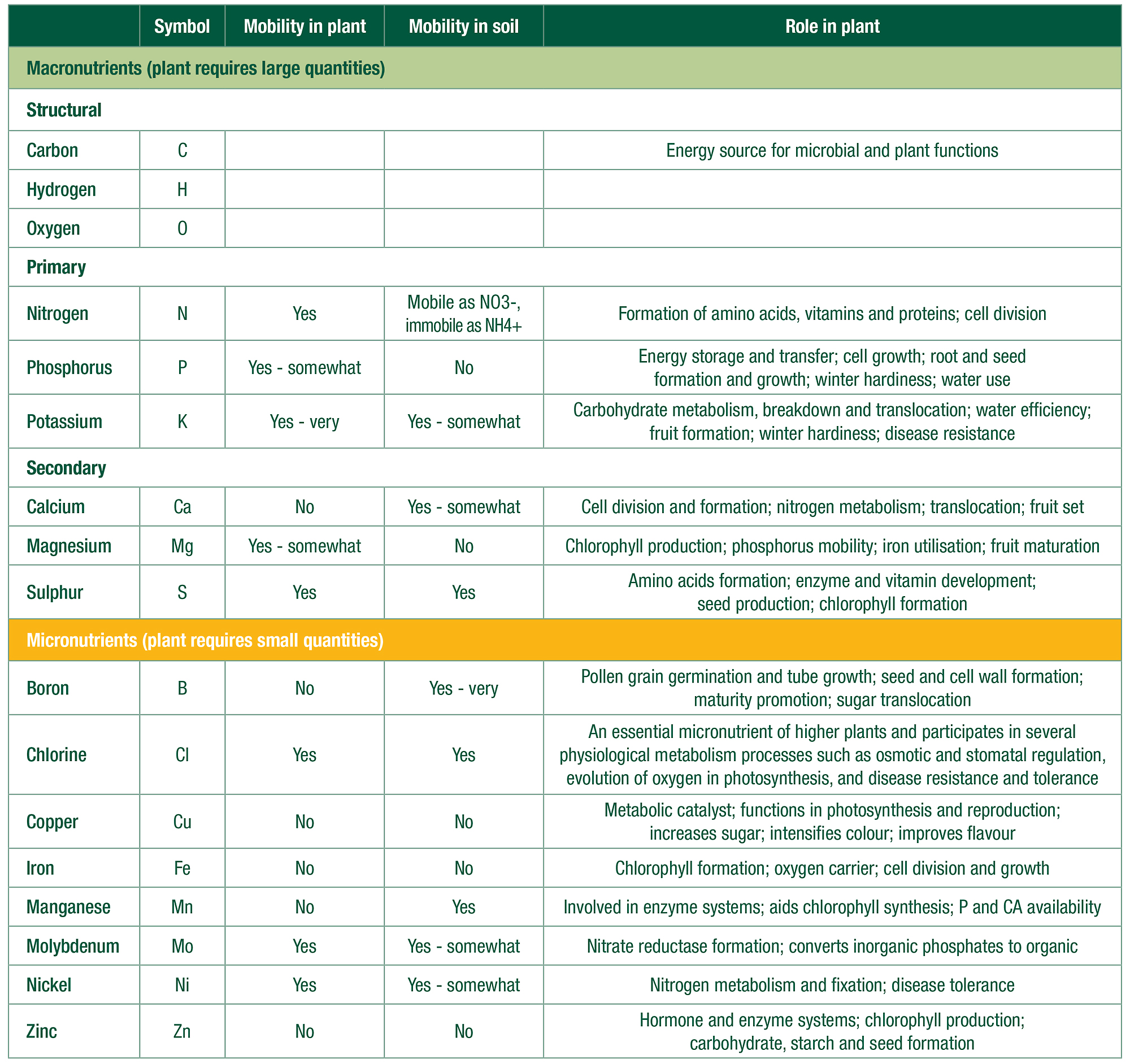
Latest
News
Nutrient Mobility explained
The term ‘nutrient mobility’ refers to characteristics of macro and micronutrients within the soil and plant. Nutrients which are important for plant growth vary in their ability to move within the soil and plant. It is their mobility that determines their plant availability as well as their loss due to leaching or runoff.
Understanding nutrient mobility is helpful in diagnosing plant nutrient deficiencies.
Biological, chemical and physical forces can change the state of those elements and make them more or less mobile. Since immobile elements do not easily move within the plant, deficiency symptoms show up in new growth. When mobile elements become limiting, they can be scavenged from older growth and moved to where they are most needed, causing deficiency symptoms in older growth. Most nutrient deficiencies do not show up until the plant is at a peak growth period or at times of high nutrient demand such as fruit set.
There are 17 different elements essential to plant growth. The first three – carbon, oxygen and hydrogen – are non-mineral and are absorbed from air and water during photosynthesis. The other 14 elements are minerals and are typically obtained from the soil after being dissolved in rhizosphere and then enter the plant as roots take up the water.

Table source: Courtesy of Michigan State University Extension, NRCCA Resources, Cornell University and BioAg research


Recent Comments